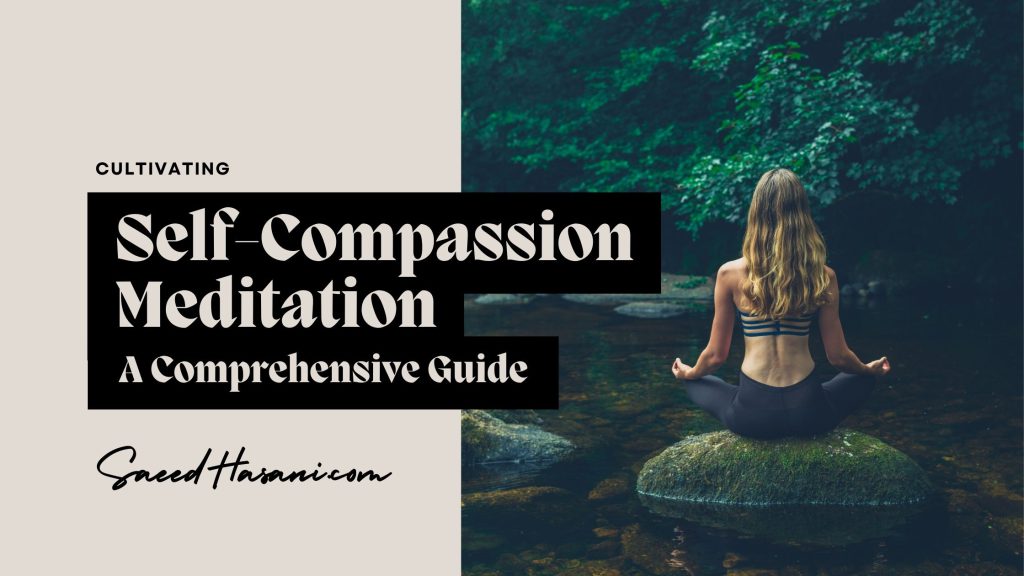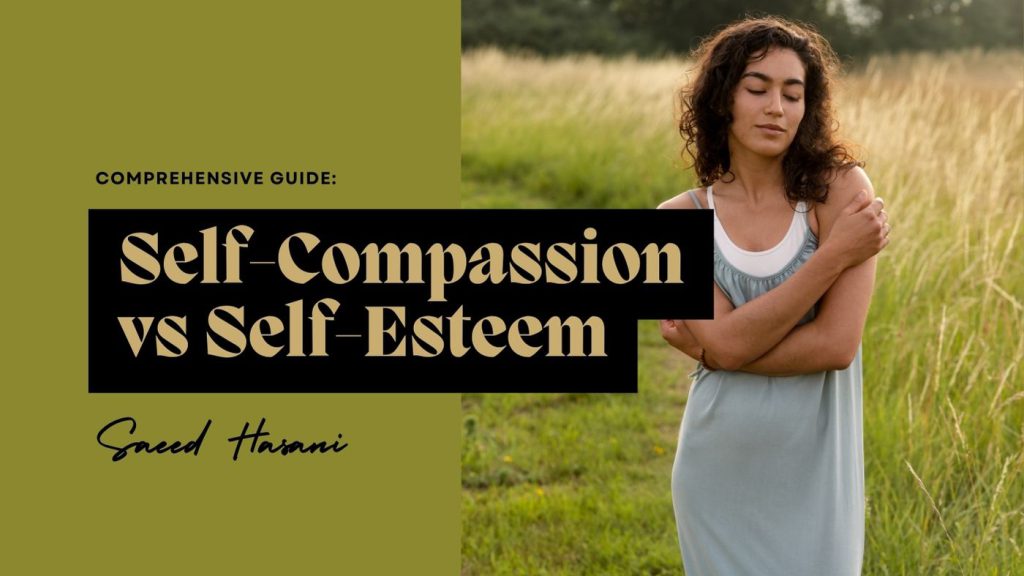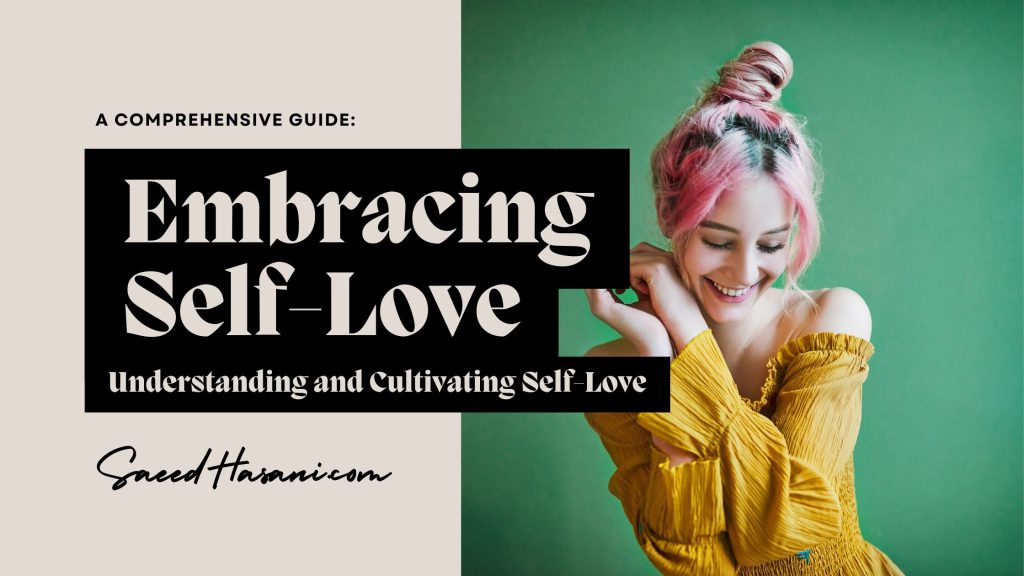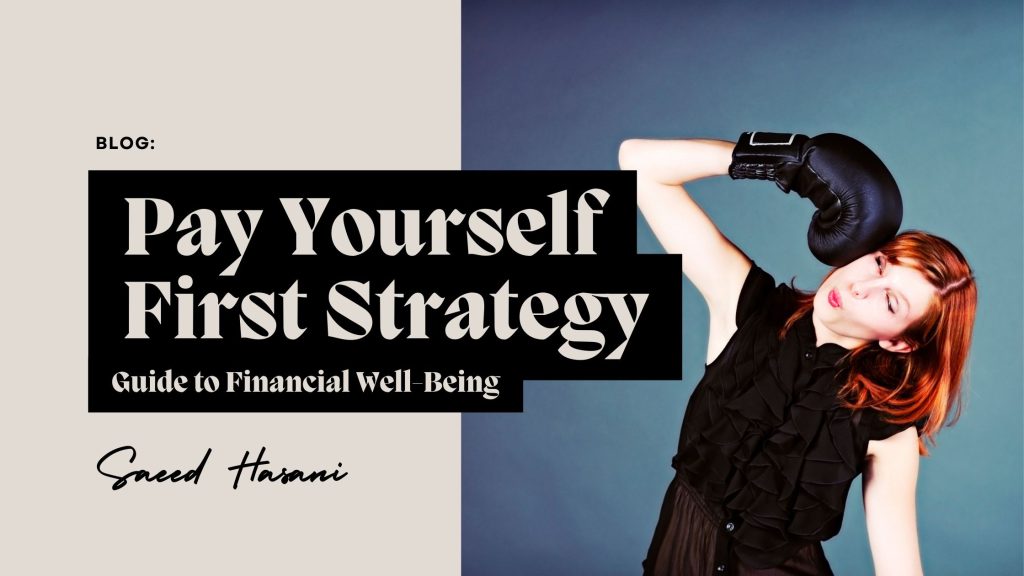Cultivating Self-Compassion Meditation: A Comprehensive Guide

Welcome to our comprehensive guide on Self-Compassion Meditation! In the midst of our busy lives, it’s easy to forget to extend the same kindness to ourselves that we readily offer to others.
This blog post is your compass to navigate the serene waters of self-compassion meditation, a powerful practice that holds the potential to transform how you relate to yourself and the world around you.
Whether you’re a seasoned meditator or a curious beginner, get ready to embark on a journey toward greater emotional well-being and self-love through Self-Compassion Meditation.
The Power of Self-Compassion Meditation
Let’s dive into the wonderful world of self-compassion meditation, something that can truly be a game-changer in our hectic lives.
How meditation enhances self-compassion
Alright, so first things first – what exactly is self-compassion meditation and how does it beef up our self-compassion muscles? Well, think of self-compassion as being kind and understanding towards yourself, especially when you mess up or face difficulties. It’s like giving yourself a big, warm hug instead of beating yourself up with harsh self-criticism. Meditation, in this context, is your trusty tool to cultivate that self-love and understanding.
When you sit down to meditate, you’re essentially creating a quiet space in your mind, away from the noisy chaos of life. In this serene mental space, you can observe your thoughts and feelings without judgment. That’s the key here – without judgment.
During self-compassion meditation, you practice acknowledging your thoughts and feelings with kindness. When you notice self-critical thoughts creeping in, you gently redirect them towards a more compassionate perspective. It’s like you’re reprogramming your brain to be your own best friend rather than your harshest critic.
So, meditation becomes this awesome gym for your emotional well-being. It strengthens your self-compassion muscles, making you more resilient and better equipped to handle life’s ups and downs.
Scientific evidence supporting the effectiveness of self-compassion meditation
Alright, so you might be wondering, “Is this self-compassion meditation stuff backed by science, or is it just hippie talk?” Well, hold onto your hats because science is totally on board with this.
Researchers have conducted numerous studies showing that practicing self-compassion meditation can lead to all sorts of positive outcomes. We’re talking about reduced anxiety, depression, and stress. It even improves your overall well-being and boosts your self-esteem.
One interesting thing they found is that self-compassionate folks are more motivated to make positive changes in their lives. Imagine that! When you’re not beating yourself up for your mistakes, you’re more likely to bounce back, learn from them, and grow.
The accessibility of self-compassion meditation for everyone
Now, here’s the cool part: self-compassion meditation is accessible to just about everyone. You don’t need to be a Zen master or live in a Himalayan cave to do it. It’s for regular folks like you and me, who have busy lives and occasionally need a little emotional pick-me-up.
You can start with as little as five minutes a day. Seriously, who can’t spare five minutes to be kinder to themselves? There are tons of apps and online resources that offer guided self-compassion meditations, making it super easy to get started. You can do it in the comfort of your own home, on your lunch break, or even during your commute (if you’re not driving, of course).
Self-compassion meditation is like a secret weapon for boosting your mental and emotional well-being, and it’s something anyone can tap into. Give it a shot, and you might just find yourself giving the mirror a thumbs-up and saying, “You’re awesome!”
Preparing for Self-Compassion Meditation
Alright, let’s get into the nitty-gritty of preparing for a self-compassion meditation session. Trust me, it’s not as complicated as it might sound, and it’s totally worth it for some inner peace and self-love.
Creating a conducive environment
First things first, set the stage, my friend. Find a spot where you won’t be disturbed. It could be your cozy living room, a corner of your bedroom, or even a quiet park bench if you’re feeling all zen with nature. The point is to create an environment that helps you focus.
Lighting can be your best friend here. Soft, warm lighting can set a soothing mood. You might also want to toss in some comfy cushions or a blanket to make your space inviting. Oh, and silence your phone. Instagram can wait; this is your time.
Choosing the right time
Timing is key. It’s all about when you’re at your most chill. Some people swear by morning meditation to kickstart the day with positivity, while others prefer winding down before bed. You do you. Just pick a time when you can truly unwind without feeling rushed.
Also, don’t fret if you miss a session here and there. Life happens. Meditation should be a refreshing choice, not another thing on your to-do list.
Comfortable seating and posture
Now, let’s talk comfort. You don’t need to twist yourself into a pretzel. Find a chair, cushion, or even sit cross-legged if that’s your jam. The key is to be comfortable enough to sit still for a little while.
Keep your back straight but not rigid. Think relaxed and alert, like you’re ready for a good chat with yourself. Your hands can rest on your lap or your knees, whatever floats your boat. Just avoid ninja poses; this isn’t a martial arts movie.
Setting an intention for your practice
This one’s crucial. Before you start, set an intention for your meditation. What’s your goal today? Is it to be kinder to yourself, let go of stress, or simply find a moment of peace? Having an intention can give your meditation a sense of purpose and guide your focus.
For self-compassion meditation, your intention might be something like, “I’m here to cultivate kindness and understanding toward myself.” It’s like giving your meditation GPS a destination to follow.
Creating the right setup for self-compassion meditation is like laying the foundation for a cozy mental retreat. It might take a bit of trial and error to find your perfect groove, but that’s all part of the journey. Now go ahead, light that metaphorical candle of self-love, and let the meditation begin!
The 5-Minute Self-Compassion Meditation Script
Hey there, busy bee! I know life can be a whirlwind, but guess what? You can still find a bit of peace and self-compassion in just 5 minutes. Buckle up, because we’re about to embark on a mini self-compassion meditation journey.
Step-by-step instructions for a 5-minute session
- Get Comfy: Find a quiet spot where you won’t be interrupted for a few minutes. Sit down in a chair or on the floor, whichever suits you best. Close your eyes if that’s comfy, but you can leave them open if that feels better.
- Take a Deep Breath: Inhale deeply through your nose, feeling your lungs expand. Exhale slowly through your mouth, letting go of any tension. Do this a few times to settle in.
- Acknowledge Your Feelings: Think about something that’s bothering you or causing stress. It could be a mistake you made or a challenging situation. Now, say to yourself, “I acknowledge that I’m feeling [insert your feeling here], and that’s okay.” Remember, no judgment.
- Offer Kindness: Imagine you’re talking to a dear friend who’s going through the same thing. What would you say to comfort and support them? Now, say those same kind words to yourself. It could be something like, “I’m here for you,” or “I care about you.”
- Feel the Compassion: Let those words sink in. Feel the warmth of self-compassion enveloping you, like a cozy blanket for your soul.
- Wrap it Up: Take one more deep breath, and when you’re ready, open your eyes. You’ve just showered yourself with a little self-love in just 5 minutes.
Tips for staying focused and present
- Mind Wander Alert: Your mind might drift off during meditation, and that’s totally fine. When it happens, gently bring your focus back to your breath or your self-compassionate thoughts. No need for self-criticism here.
- Practice, Practice, Practice: Like any skill, self-compassion meditation gets better with practice. So, don’t be discouraged if your mind keeps wandering in the beginning.
- Be Patient: Sometimes, self-compassion doesn’t come naturally, especially if you’re used to being your own worst critic. Be patient with yourself, and don’t expect miracles overnight.
Personal anecdotes or stories related to the practice
Picture this: I once had a day when everything seemed to go wrong. I’d spilled coffee on my white shirt, missed a deadline at work, and lost my keys. I felt like the universe was conspiring against me. In a moment of frustration, I decided to try a quick self-compassion meditation.
As I sat there, breathing deeply, I realized how harshly I’d been treating myself. It was like I was my own personal drill sergeant. But then, as I imagined speaking to a friend in my situation, the words of comfort flowed effortlessly. “It’s okay, everyone messes up sometimes,” I whispered to myself.
In that brief moment, I felt a wave of self-compassion wash over me. It didn’t magically fix my day, but it made it easier to handle. And that’s the power of a little self-compassion, even in just 5 minutes.
So, there you have it, a super simple way to sprinkle some self-compassion into your day. Give it a shot whenever you need a breather from life’s craziness. Remember, you’re your own best friend, and you deserve a little love and kindness too.
Variations and Adaptations
Let’s talk about making self-compassion meditation work for you. There’s no one-size-fits-all approach, so let’s dive into some variations and adaptations that’ll suit your groove.
Different approaches to self-compassion meditation
So, you’ve tried the classic self-compassion meditation, and you’re thinking, “What else is out there?” Well, you’re in luck, my friend. There are more flavors of self-compassion meditation than there are ice cream at the parlor.
- Loving-kindness meditation: This one’s all about sending love and good vibes to yourself, loved ones, and even people you might not get along with. It’s like a positive blast for everyone, including yourself.
- Body scan with self-compassion: Combine mindfulness with self-compassion by doing a body scan. You focus on each part of your body, acknowledging any tension or discomfort with kindness and understanding.
- Visualizations: Imagine a peaceful place where you can go to when you need self-compassion. Picture yourself there, basking in self-love and warmth. It’s like taking a mental vacation to your happy place.
- Metta Meditation: Also known as the “metta bhavana” in Buddhism, this practice involves reciting affirmations or phrases of goodwill towards yourself and others. It’s like planting seeds of kindness in your mind.
How to modify the scripts to suit your personal preferences
Scripts are great, but they’re not set in stone. Feel free to customize them like your favorite pizza order. Here’s how:
- Add your own words: If the script doesn’t quite resonate with you, tweak it. Use words and phrases that feel authentic to you. After all, self-compassion is a personal journey.
- Change the setting: Don’t feel like meditating indoors? Take your script outdoors or to a different spot in your home. The change of scenery can work wonders.
- Adjust the length: If you need a shorter or longer session, trim or expand the script accordingly. The key is to make it a sustainable practice for you.
- Incorporate props: Want to hold a soothing crystal, use scented candles, or have a comforting blanket during your meditation? Go for it. These props can add a sensory dimension to your practice.
Incorporating self-compassion meditation into other mindfulness practices
Self-compassion doesn’t live in isolation. It can be a fantastic addition to your mindfulness toolkit. Here’s how:
- Morning Routine: Start your day with a dose of self-compassion. Instead of rushing through your morning, take a few minutes to center yourself and set a positive tone for the day.
- Mindful Walks: Combine self-compassion with nature by taking mindful walks. As you stroll, acknowledge your feelings and offer kindness to yourself. It’s like a moving meditation.
- Breathing Exercises: Integrate self-compassion into your breathing exercises. When you inhale, think of taking in self-love and kindness, and as you exhale, release any self-criticism or negativity.
- Journaling: Pair self-compassion meditation with journaling. After your practice, jot down your thoughts and feelings. It’s a fantastic way to deepen your understanding of yourself.
So, there you have it—self-compassion meditation with a side of adaptability and creativity. Remember, it’s your journey, and you get to navigate it in a way that feels just right for you.
Overcoming Common Challenges
Hey there, fellow meditators! Let’s get real about the common hiccups we encounter in our meditation journey and how to power through them. We’ve all been there, so no worries.
Dealing with distractions during meditation
Picture this: You’re all zen, sitting comfortably, ready for your meditation session, and then BAM! The neighbor’s lawnmower starts roaring, your cat decides it’s playtime, and your mind’s racing like a caffeinated squirrel. Distractions, they’re like the uninvited guests at the meditation party.
Solution: Embrace the distractions. Seriously. Instead of getting frustrated, use them as part of your practice. When a noisy neighbor makes a cameo, notice it without judgment, and gently bring your focus back to your breath or your mantra. It’s like adding extra weights to your mental meditation gym. Over time, you’ll become a distraction-dodging ninja.
Managing self-criticism and judgment
Ah, the inner critic, our not-so-favorite companion. It loves to chime in during meditation, saying things like, “You’re doing it wrong,” or “You should be more relaxed by now.” Yeah, thanks for the pep talk, inner critic.
Solution: Show that inner critic the door. When those judgmental thoughts pop up, acknowledge them with a friendly nod and then let them drift away like clouds. Remember, meditation is a judgment-free zone. It’s okay to have a busy mind or fidgety legs. Your job is to observe without criticism.
Staying consistent with your practice
Consistency, the elusive beast of meditation. It’s easy to start with a bang and then slowly drift away as life gets in the way. We’ve all been guilty of it.
Solution: Make it a habit, not a chore. Find a time that works for you—maybe it’s right after your morning coffee or just before bedtime. Set a realistic goal. It could be as short as five minutes a day. The key is to make it manageable, so it becomes an automatic part of your routine. And hey, if you miss a day (or three), no biggie. Just jump back in when you can. Every moment is a fresh start.
Remember, challenges are part of the meditation game. It’s not about having a perfectly still mind or always feeling like a meditation guru. It’s about showing up, being kind to yourself, and embracing the messy, distracted, and inconsistent parts of you.
Personal Transformation Through Self-Compassion
Hey, let’s chat about something pretty remarkable today – personal transformation through self-compassion. It’s like a superhero power for the soul.
Stories of individuals who have experienced significant change
So, picture this: There’s this person, let’s call them Alex, who used to be their own worst enemy. They’d beat themselves up over every little mistake, carry the weight of past regrets, and just feel stuck in a cycle of self-criticism. Sound familiar?
But then, Alex stumbled upon self-compassion. They started practicing self-compassion meditation regularly, treating themselves with kindness and understanding. And guess what? Slowly but surely, Alex started to change.
Instead of dwelling on their shortcomings, they began to acknowledge them without judgment. It was like a mental shift from self-criticism to self-acceptance. Alex found the courage to take risks, embrace their imperfections, and even ask for help when needed. They started to bloom, like a flower finally getting the sunlight it deserved.
The ripple effect of self-compassion on relationships and well-being
Now, here’s where it gets even cooler. When Alex started showing compassion, it didn’t just stop with them. It spilled over into their relationships. They were more patient, forgiving, and understanding towards others. Turns out, when you’re kinder to yourself, it’s easier to be kind to everyone else.
Alex’s well-being also did a happy dance. Stress levels? Lower. Happiness? Higher. Resilience? Through the roof. It’s like they unlocked a secret to emotional well-being that had been there all along.
The ripple effect continued as they inspired their friends and family to hop on the self-compassion train. It was like a positivity virus, spreading love and understanding like wildfire.
Scientific insights into the long-term impact of self-compassion meditation
But hold onto your hats, folks, because science is here to back up this transformation story. Researchers have been peeking into the brains of folks who practice self-compassion, and the results are mind-blowing.
Long-term self-compassion meditation has been linked to changes in brain regions associated with emotional regulation. It’s like your brain is doing push-ups, getting stronger in the self-compassion department. It’s also been shown to reduce symptoms of depression, anxiety, and stress. In fact, it’s like giving your mental health a little superhero cape.
So, there you have it – personal transformation through self-compassion. It’s not just a fluffy concept; it’s a real-life game-changer. And who knows, you might be the next Alex, inspiring change in yourself and those around you with the power of self-compassion.
Tips for Sustaining Your Self-Compassion Meditation Practice
Hey, you’ve embarked on the self-compassion meditation journey, and that’s awesome! Now, let’s talk about how to keep that flame burning because consistency is where the magic happens.
Building a routine
So, you’ve had a few sessions, and you’re thinking, “How do I make this a regular thing?” Well, the secret sauce is building a routine. It’s like making self-compassion meditation your daily cup of tea (or coffee if that’s your jam).
- Time It Right: Find a time that works for you, whether it’s in the morning, during lunch, or before bed. Consistency starts with scheduling your practice into your day.
- Start Small: Don’t aim for a marathon session right away. Begin with just a few minutes a day. It’s all about making it doable.
- Use Reminders: Set alarms or reminders on your phone. Sometimes, a little nudge is all you need to get on the cushion (or chair, or floor).
- Track Your Progress: Keep a journal to record your sessions and how you feel afterward. Seeing your progress can be a powerful motivator.
Finding accountability and support
Meditation buddies? Yep, they’re a thing, and they can be a game-changer for your practice.
- Join a Group: Look for local meditation groups or online communities. Sharing your journey with others can provide motivation and a sense of belonging.
- Meditation Apps: There are tons of apps out there with built-in communities and guided meditations. It’s like having a meditation buddy in your pocket.
- Buddy System: If you have a friend interested in meditation, partner up! You can check in on each other’s progress and hold each other accountable.
Recognizing and celebrating your progress
Okay, so you’re meditating regularly—hooray! Now, don’t forget to pat yourself on the back.
- Milestone Celebrations: When you hit a meditation milestone, celebrate it! Treat yourself to something you enjoy or acknowledge your dedication in some way.
- Mindful Reflection: Take a moment to reflect on how your practice has influenced your life. Notice the positive changes, whether it’s reduced stress, better sleep, or a calmer mind.
- Self-Compassion Check-In: Remember, self-compassion isn’t just for meditation; it’s for life. When you notice your inner critic acting up, use your self-compassion skills to counter it.
So there you have it, sustaining your self-compassion meditation practice is all about building a routine, finding support, and celebrating your journey. Keep at it, and who knows, you might just become a self-compassion meditation guru!
Conclusion
In the hustle and bustle of life, it’s easy to forget the most important person in the room—you. In this blog post, we’ve delved into the transformative power of self-compassion meditation. We explored how creating a conducive environment, setting intentions, and adapting your practice can make a world of difference. We shared stories of personal transformation, where individuals went from being their own harshest critics to becoming their own biggest cheerleaders. And we learned about the ripple effect of self-compassion on our relationships and overall well-being.
Now, here’s the kicker: it’s not just about understanding self-compassion intellectually; it’s about practicing it daily. It’s about making self-compassion a part of your life, a guiding principle that shapes how you interact with yourself and others. So, whether you’re just starting or have been on this journey for a while, the key is to keep going, keep growing, and keep showering yourself with kindness.
We’d love to hear from you. How has self-compassion meditation impacted your life? Are there any tips or stories you’d like to share? Drop a comment below, and let’s continue this conversation. Together, we can inspire and support each other on our self-compassion journey.







Responses